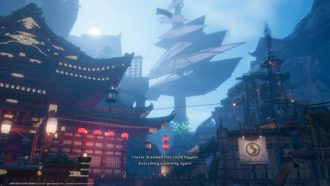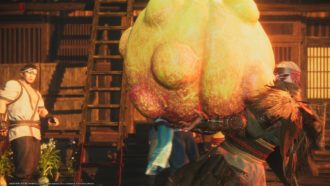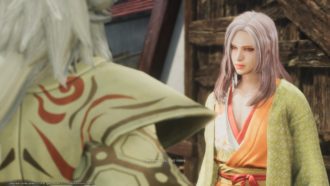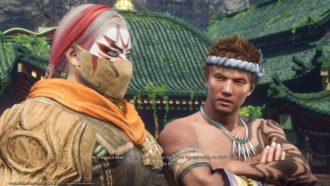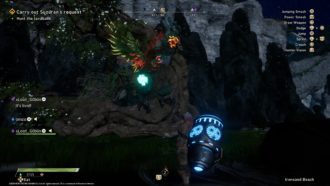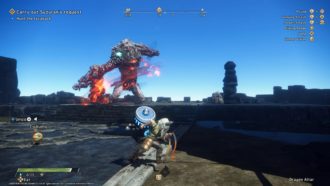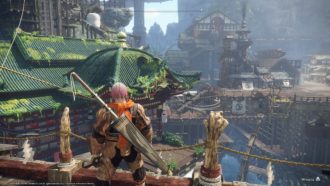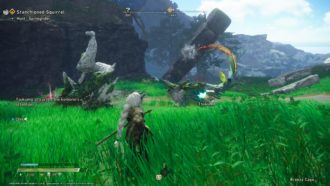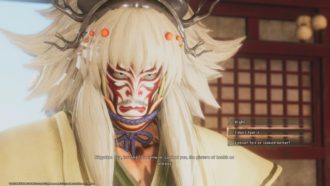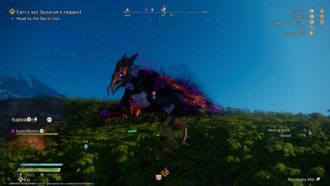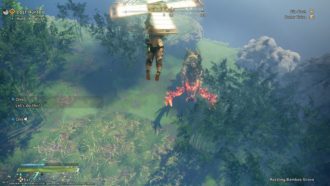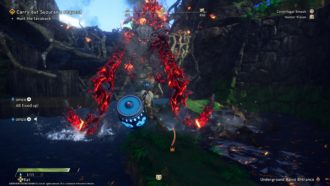Platforms:
PC, PS5, Xbox Series X|S
Released:
February 17, 2023
Publisher:
EA
Developer:
Omega Force
Get ready to embark on an exhilarating journey with Wild Hearts, the highly-anticipated monster-hunting game from Omega Force, published by KOEI TECMO and EA. With colossal battles against the formidable beasts known as Kemono, this game will give even the most popular hunting games, like Monster Hunter, a run for their money.
Giant beasts and magic in feudal Japan
Azuma is a fantasy landscape inspired by feudal Japan but with nature-infused beasts rampaging across the world. Kemono can alter their surroundings, causing harmful blizzards or overgrowth that are costing the lives of citizens. Hunters obtain a magical technology, and twist to the gameplay, called Karakuri after a fight with the winter wolf Deathstalker and become the chosen ones to bring balance to Azuma.
The story of Wild Hearts is an important and very clear allegory for the environment and climate change. The people in the town, the effect each decision has on the world, and of course the impact of nature bending Kemono all have a role to play in the narrative. While it’s not original or very engrossing, the story is serviceable to drive the incredible gameplay loop and meet the charming faces of the main village Minato.
A cast of interesting characters guide and support hunters along the journey. Natsume is a friendly, upbeat ally with the key role of forging armour and weapons, and Ujishige is a noble companion who will be present throughout the whole adventure. The mysterious Mujina, a musician with a furry tail and animal mask, pops up at pivotal moments in the story with cryptic guidance about what’s to come. There is plenty of great characterisation among the diverse roster of personalities in Wild Hearts, making returning to Minato to hand in quests or buy items a pleasure.
Champion of the Kemono
Wild Hearts boasts action-packed gameplay that will feel familiar to anyone who has a history of monster hunting. Taking down the towering Kemono beasts across four different regions, and an additional end-game zone, in both solo and co-op play is seriously fun. Throwing in crafting and base-building elements with the power of Karakuri make this game special.
Players choose from eight distinct weapon types to wield, each one a different playstyle. They all have an attack characteristic of slash, pummel or lunge damage and are further enhanced with elemental upgrades of wood, fire, water, wind, or earth. Each weapon has a unique move set, two normal attacks and a special attack that can activate a boosted state. The claw blade has a plunge and wing-blade power lunge that keeps hunters tethered to fast-moving, mobile enemies, whereas the bladed wagasa (the umbrella) deals much less damage but with correct timing its parry leads to devastating combos. Understanding which weapon is strongest or weakest against a Kemono is essential for a tactical advantage.
“…crafting and base-building elements with the power of Karakuri make this game special.”
It’s important to switch between weapons each battle and play around with combinations in co-op for the most optimal loadout. For example, the Earthbreaker is vulnerable to pummel and lunge damage weapons like the heavy-hitting maul and the ranged bow. The weapons function like character classes and the game encourages experimentation with an expansive upgrade tree as well as its many elemental specialisations.
Hunters start with five of the weapons almost immediately in the main story, It allows players to quickly focus on an elemental pathway of their choice and start investigating playstyles straight away. As the story progresses, the remaining three weapon types are unlocked which shakes up approaches to already defeated monsters. It’s always a promising idea to return to explored areas and hunt the gruelling beasts again to collect key upgrade materials for weapon enhancements, seek out hidden talismans for bonuses, as well as complete quests for the citizens of Minato. Through this, Wild Hearts makes replaying areas entertaining and not an otherwise boring chore.
Before heading out to the next big fight, it’s critical to prepare at a camp. Hunters collect food items and can prepare them to increase the stat boosts they offer. Eating food that provides resistance to a Kemono’s innate elemental attributes is vital before even considering taking them on. Same with upgrading armour and weapons. A forge can be crafted at a camp so there’s no need to return to the main hub of Minato to change equipment, make significant upgrades, or forge new items to dominate in combat. Being able to access all these options and set camps in multiple locations using Karakuri across the vast maps is great quality-of-life game design.
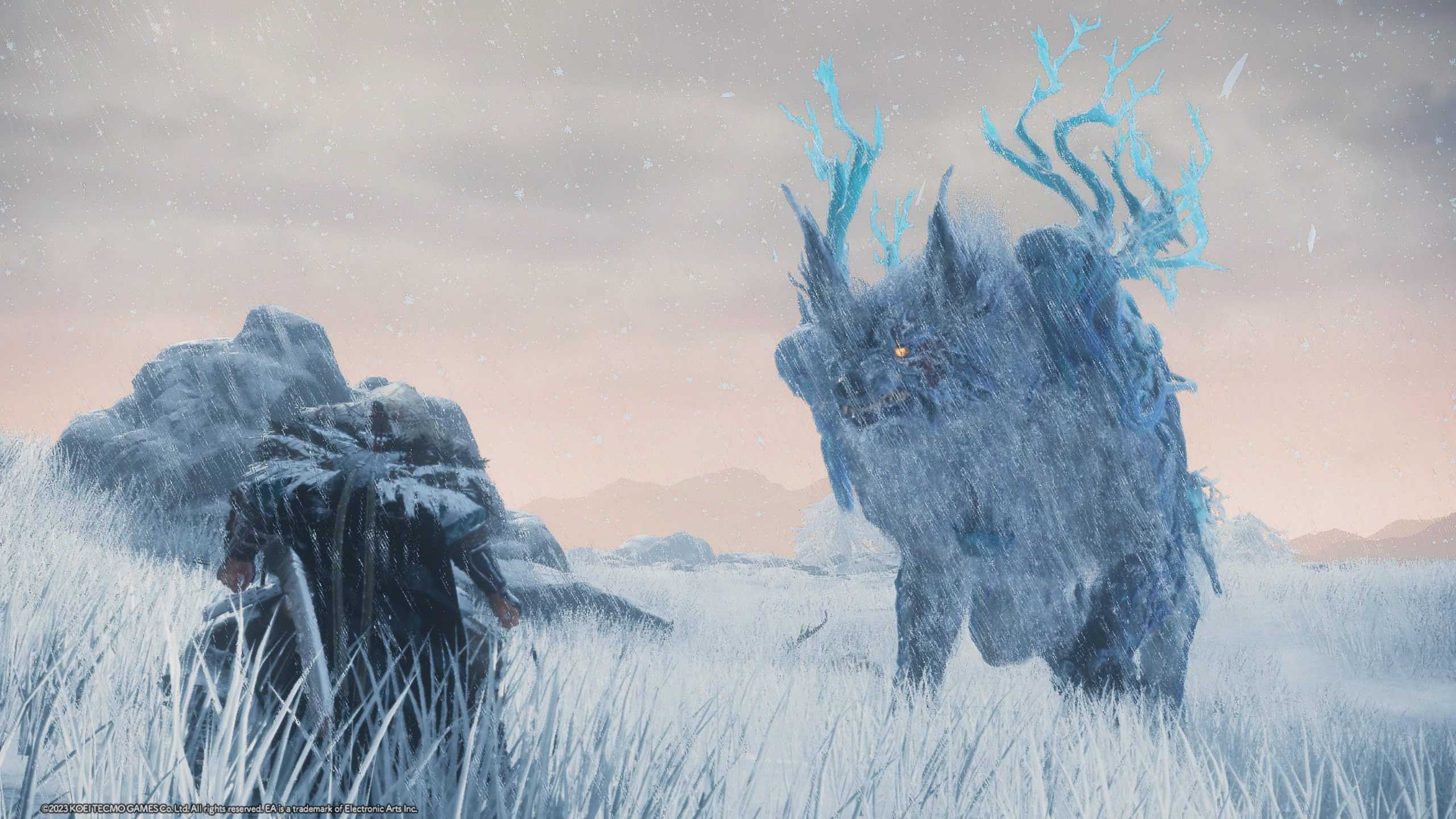
Natural giants of Azuma
There are over fifty different Kemono, big and small, throughout Wild Hearts. Their designs are all inspired by real-life animals or Japanese mythos mixed with the elements of the world. Undergoing unique evolutions to fuse with nature, they have distinct abilities that allow them to modify the environment around them in combat against hunters.
Kemono might be dangerous, yet they are magnificent to look at. Each has an imaginative and unique look that plays into the way they move and attack. The Lavaback is a huge molten-rock primate, however, it is surprisingly agile with aerial body slams and gap-closing sliding attacks. Each new beast met is violent and has the potential to be more than what it seems.
“Kemono might be dangerous, yet they are magnificent to look at.”
Evolving to a second stage, Kemono will bolster their nature-bending powers as a last resort for survival. This is where they become extremely deadly, changing their moves and speeding up attacks or increasing damage. They’ll manipulate the environment around them, creating harmful trees and branches like the Dreadclaw or spreading poison like the Fumebeak. These moments require a change in strategy and force hunters to be quick on their feet for exciting gameplay.
Hunters can jump onto the creatures and aim for weak spots. By attacking the glowing blue areas using the Hunter’s Arm, players are likely to retrieve rarer materials from the battle. It’s a risky move that requires finesse and practice, but rewarding when pulled off correctly and another thrilling feature of the action.
The downside is, there are roughly 20 giant Kemono in Wild Hearts and eventually their tricks become child’s play. Returning to the same beasts and areas to gather materials for upgrades and armour is part of the gameplay loop, meaning after some time the special “wow” factor wears off. It may get repetitive for players who don’t enjoy that grind cycle. With additional content to come, hopefully the superb foundations Omega Force have set will be a launching pad for an enormous catalogue of beasts to hunt.
Getting creative with Karakuri
The ancient Karakuri technology allows players to craft and build new highly flexible and creative hunting grounds to take down the massive beasts. Materials for Karakuri can be collected quickly throughout the world, minimising the time it takes to stock up, and keep the focus on exploring and battle. Every Kemono a hunter defeats reveals new Karakuri and resources to use and advance the experience.
Initially, placing jumping pads for extra height and damaging attacks can feel gimmicky. After defeating the Ragetail, Kingtusk, Sapscourge, and Spineglider, the real capability Karakuri provides is properly realised. Zipping into battle for a sneaky starting attack off a flying vine, then dodging out of the way of a deadly attack with a quickly placed spring, and following that up with alighting a katana with a torch for an impressive combo is so satisfying. Once controlling Karakuri is mastered, there is a flow state of mind to combat that feels so fluid and rewarding, unlike other action-hunting games.
“Karakuri is truly what sets Wild Hearts apart…”
Karakuri can also be used to move around maps easier. The flying vine can be set up to take players from one side of the map to the other, allowing them to jump off at any moment to get where they need to be. The wind vortex creates a strong upwards draft and when used with a glider it can allow hunters to reach otherwise unreachable places and fly around the environment. The roller can be used to catapult into Kemono or simply traverse long distances in a snap. How versatile Karakuri can be in combat, exploring, and as a tool to get around demonstrates the complexity and superb design of the mechanic.
Tsukomo companions, little orbs that roll around and provide healing or materials during battle, are powered by Karakuri and are useful aids. Although, their capability isn’t deep, offering simple random support for attack, defence, healing and material tethering that can be upgraded with collectable cogs. It’s a shame as there could be more inventive flair to these little bouncy beings. While they may not be as cute or memorable as Palico, they are just as important to solo play and challenging fights.
Karakuri is truly what sets Wild Hearts apart from Monster Hunter. It’s an amazing addition to the formula that not only makes the game more interesting but takes it to the next level.
Pop-in and out with other hunters
Visually, there are clear problems with Wild Hearts. Testing the game on both PC and consoles, there are jarring pop-in textures and objects when travelling through the world. There are currently issues with HDR lighting effects as well, making some areas completely blown out with highlights and dark spaces like caves ridden with black crush. Anti-aliasing on PC was a problem in our playtime, too, making everything quite blurry and distracting. These issues are known to the developers and hopefully a fix is on the way.
While the chaotic fights of titan size can have amazing special effects and object detail, there is a fair bit of frame rate dropping, too. It’s understandable with as much going on at once on the screen but really presents how unoptimised Wild Hearts is on both PC and consoles. There’s some work to do to improve the functionality of the game.
“Wild Hearts doesn’t start slowly and isn’t overly punishing.”
The good news is cooperative play is fantastic. Hunters can join each other at campfires, bringing up a menu to join or host a multiplayer session. The Hunter’s Gate is another option, these glowing portals show five joinable quests from players who are requesting assistance. Making sure Request Assistance is on when entering a hunt means anyone can join at any time to fight alongside, and this is where the best moments of the game are made. Especially early on, players with more experience will be a guide through challenging battles with their impressive arsenal and understanding of Karakuri and weapon upgrades.
Cross-play is also available in Wild Hearts. So, players across PlayStation 5, Xbox Series X|S, and PC can join together and take on the titans of Azuma. Omega Force also has planned completely free content updates throughout 2023, with no plans to feature microtransactions.
Unlike Monster Hunter, Wild Hearts doesn’t start slowly and isn’t overly punishing. The game empowers players and gets straight to fighting gigantic beings, even offering three lives and a revive option in multiplayer. There’s less focus on understanding timings and moves with the mostly easy-to-learn arsenal of weapons and fewer punishing attacks from Kemono. The learning curve for Wild Hearts is admittedly not as high, meaning combat isn’t as deep as Monster Hunter, but Karakuri turns the game into something special with how easy it is to pick up and enjoy.
8.5
Great
Positive:
- Karakuri is a creative and well-implemented mechanic
- Satisfying combat and Kemono to hunt
- Deep upgrade and skill trees, as well as end-game content
- Co-op works well and makes hunting even more fun
Negative:
- Visual problems and frame rate drops
- Story isn't anything special
- Might be repetitive for some players
Wild Hearts takes the hunting action to the next level with vicious beasts, a vast world to explore, and an array of powerful weapons. But that’s not all—the magical Karakuri crafting system seamlessly blends with combat and exploration to offer an awe-inspiring experience. It’s so fluently integrated into the game that you’ll be amazed at how much it advances combat, exploration, and the engaging gameplay loop. Still, the adventure suffers from visual issues and a waning grind. Even so, Wild Hearts is my new monster-hunting addiction.
